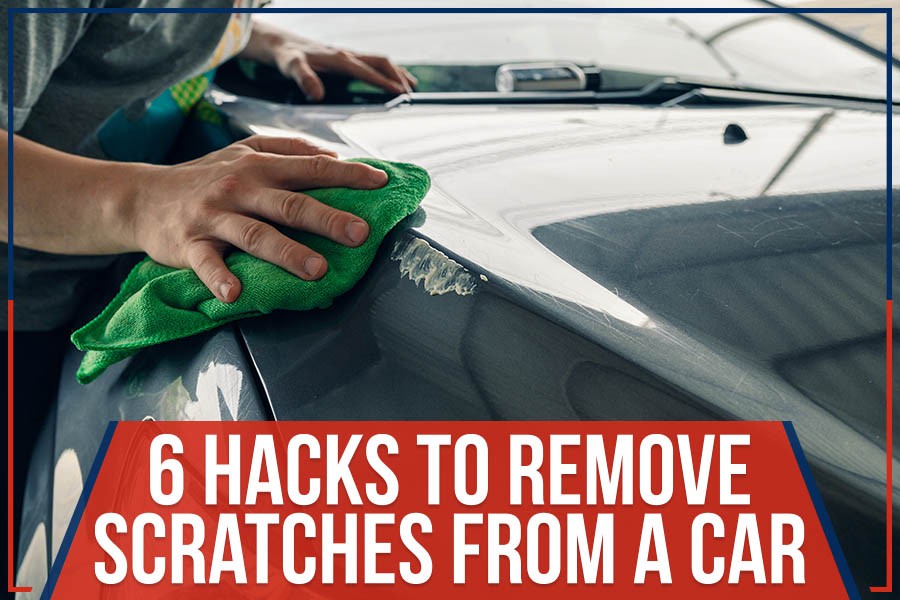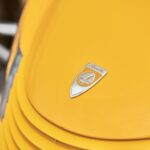Car scratches are an unavoidable nuisance for any vehicle owner. From stray shopping carts in parking lots to brushing against bushes on narrow roads, minor scratches can appear seemingly out of nowhere. While deep scratches may necessitate professional repair, many superficial scratches can be effectively removed at home using simple DIY methods and common household items. This guide will walk you through several proven techniques to restore your car’s finish and keep it looking its best.
Understanding the Type of Scratch
Before you start attempting to remove any scratches, it’s important to understand the depth and severity of the damage. Car paint typically consists of several layers: clear coat, base coat (color), primer, and the metal body. Minor scratches usually only affect the clear coat layer, while deeper scratches can penetrate to the base coat or even primer. Knowing the depth will help you choose the appropriate removal method. A simple test is to lightly run your fingernail across the scratch. If your nail doesn’t catch, it’s likely a clear coat scratch and easier to fix at home.
DIY Methods for Minor Car Scratches
For light scratches that haven’t penetrated beyond the clear coat, several household items can be surprisingly effective.
1. Toothpaste for Superficial Scratches
 Applying toothpaste to remove car scratches
Applying toothpaste to remove car scratches
Believe it or not, toothpaste can act as a mild abrasive to gently buff out very light scratches. The微小的磨料 particles in toothpaste can help level out the edges of the scratch, making it less visible.
How to use toothpaste:
- Ensure the area around the scratch is clean and dry. Wash the area with car wash soap and water, then dry it with a microfiber towel.
- Apply a small amount of non-gel toothpaste (white toothpaste works best) to a clean, soft microfiber cloth.
- Using circular motions, gently rub the toothpaste onto the scratch. Apply light to moderate pressure.
- Continue rubbing for a minute or two.
- Rinse the area thoroughly with water to remove all toothpaste residue.
- Dry the area with a clean microfiber towel.
- Inspect the scratch. You may need to repeat the process for slightly deeper clear coat scratches.
2. Baking Soda Paste for Light Scratches
Baking soda, another common household item, can also be used to create a mild abrasive paste suitable for removing minor car scratches.
How to use baking soda paste:
- Mix baking soda and water in a bowl to create a paste with a consistency similar to toothpaste. A 1:1 ratio is usually sufficient.
- Clean the scratched area and dry it completely.
- Apply the baking soda paste to a clean, damp microfiber cloth.
- Rub the paste onto the scratch using circular motions, applying gentle pressure.
- Continue buffing for a few minutes.
- Rinse the area thoroughly with water to remove all baking soda residue.
- Dry with a clean microfiber towel and evaluate the results. Repeat if necessary.
3. Vinegar Solution for Minor Marks
While not as abrasive, a simple vinegar solution can sometimes help remove very minor surface marks or scuffs that may appear like scratches. Vinegar can act as a mild cleaning agent to remove residue or grime that might be exaggerating the appearance of a scratch.
How to use a vinegar solution:
- Mix equal parts white vinegar and water in a spray bottle or bowl.
- Clean the scratched area and dry it.
- Spray or apply the vinegar solution to a clean microfiber cloth.
- Gently wipe the scratched area with the damp cloth.
- Rinse the area with water and dry with a clean microfiber towel.
- Check if the mark has improved. This method is best for very light blemishes rather than actual scratches.
DIY Methods for Deeper Scratches
For scratches that are slightly deeper and may have penetrated the clear coat more significantly, you might need slightly more specialized DIY approaches.
4. Clear Nail Polish for Protecting Deeper Scratches
For deeper scratches that you can feel with your fingernail, clear nail polish can act as a temporary sealant to protect the exposed paint layers and prevent rust, especially if the scratch has reached the base coat or primer. However, this is more of a temporary fix and a preventative measure rather than a true scratch removal method.
How to use clear nail polish:
- Clean and dry the scratched area thoroughly.
- Apply a very thin layer of clear nail polish directly into the scratch using the brush provided with the nail polish. The goal is to fill the scratch, not to paint over the surrounding area.
- Allow the nail polish to dry completely and harden. This may take a few hours.
- Once dry, you can use a very fine polishing compound to carefully level the nail polish with the surrounding paint if needed. However, be extremely cautious not to damage the surrounding clear coat.
5. Commercial Car Scratch Removal Products
 Applying toothpaste to remove car scratches
Applying toothpaste to remove car scratches
For more effective DIY scratch removal, especially for scratches that are beyond the reach of household remedies, commercial scratch removal products are readily available at auto parts stores. These products are specifically formulated to remove car scratches and often contain mild abrasives and polishing agents.
How to use commercial scratch removers:
- Choose a scratch remover product that is appropriate for the type of scratch you have (light, medium, or deep). Read product reviews and instructions carefully.
- Clean the scratched area thoroughly and dry it.
- Apply a small amount of scratch remover to a clean applicator pad or microfiber cloth (as instructed by the product).
- Using firm, even pressure, rub the product into the scratch using back-and-forth or circular motions, as directed by the product instructions.
- Buff the area until the scratch appears to be removed or significantly reduced.
- Wipe away any excess product with a clean microfiber cloth.
- Some products may recommend applying car wax or polish afterward to protect the finish.
- Always follow the specific instructions provided with the scratch removal product you choose. Be wary of very cheap, budget kits as they might be ineffective or even cause further damage.
When to Seek Professional Car Scratch Repair
 Applying toothpaste to remove car scratches
Applying toothpaste to remove car scratches
While DIY methods can be effective for minor scratches, deep scratches that penetrate multiple paint layers or cover a large area are best left to professional auto body shops. Professionals have the expertise, tools, and materials to properly repair more significant damage, including sanding, repainting, and color matching to ensure a seamless repair.
Reasons to consider professional scratch repair:
- Deep scratches: If the scratch is deep enough to expose the primer or metal, professional repair is recommended to prevent rust and ensure a proper finish.
- Large or complex scratches: Extensive scratches or scratches in difficult-to-reach areas are better handled by professionals.
- Color matching: Professional shops have the ability to precisely color match your car’s paint for undetectable repairs.
- Warranty: Professional repairs often come with warranties, giving you peace of mind.
- Maintaining vehicle value: Proper professional repair ensures your car maintains its resale value.
If you are unsure about the severity of your car’s scratches or are uncomfortable attempting DIY repairs, it is always best to consult with a professional auto body shop for an assessment and repair options. They can provide expert advice and restore your car’s finish to its original condition.

